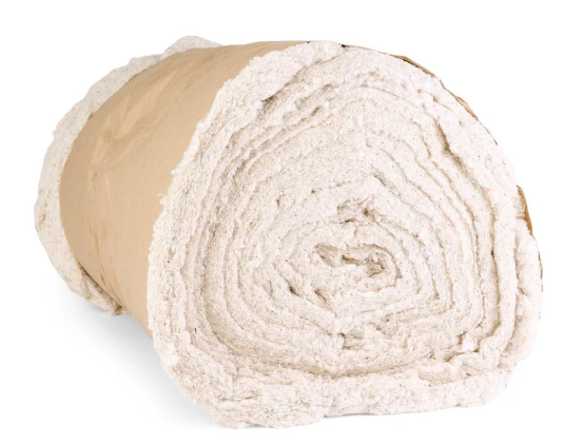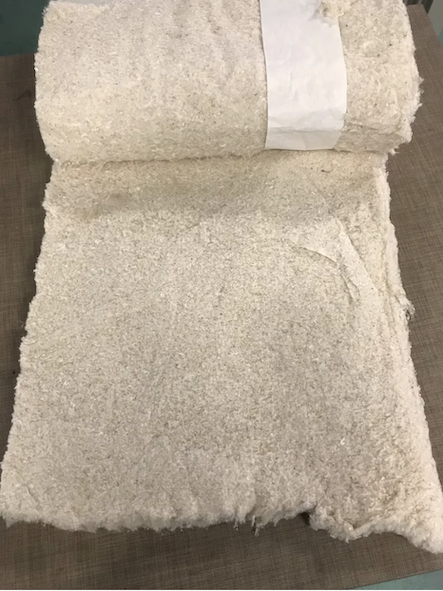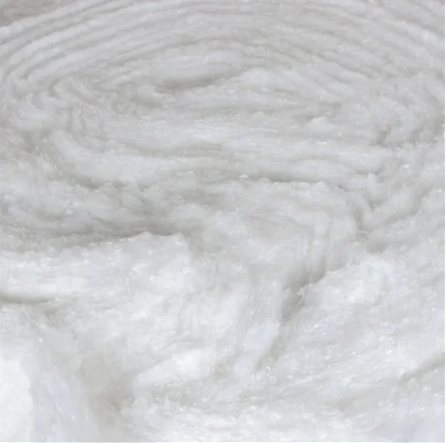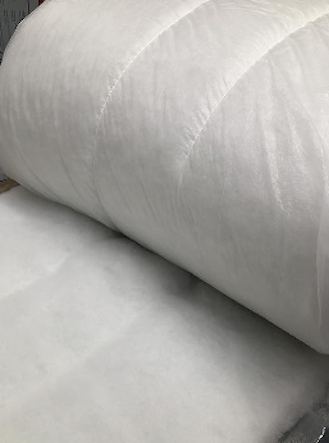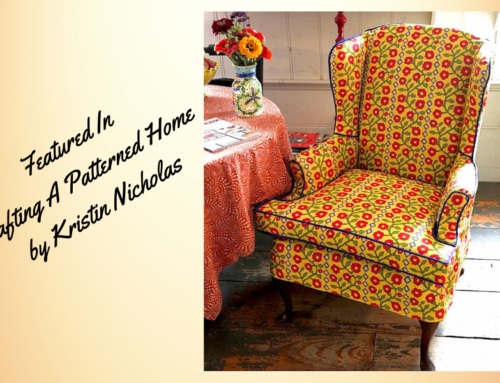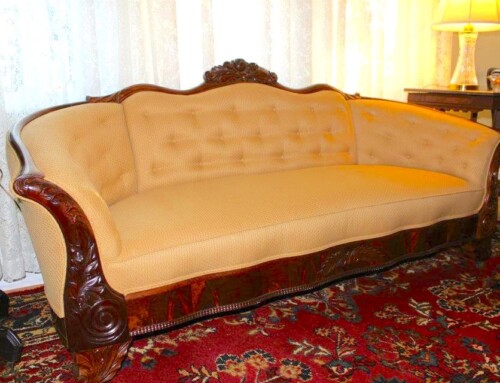Upholstery Cotton – Natural or Synthetic
Let’s talk about undergarments for furniture! I get many questions about “How do I choose the right upholstery cotton for my chair?” and “Do I have to replace the old upholstery padding already there?” What’s under significantly affects the longevity and feel of your upholstered piece. Don’t underestimate the difference the quality of your foams and fillers make in how your DIY upholstery project turns out. Watch the video below about why you shouldn’t go over the old padding.
Options for padding your project
The modern fills or stuffings we use in upholstery today include natural or synthetic upholstery cotton, a variety of foams, and polyester batting (Dacron is a brand name). As you work on projects and gain experience, you’ll discover what you like to work with the best. Here’s a rundown of what they are and where to source them. If you’re a DIYer, you’ll need a supplier that sells to the retail market. If you’re a small business with a Tax ID number, you can buy from wholesale to the trade suppliers.
Natural or Synthetic Upholstery Cotton –
Upholstery cotton is sold in natural and synthetic forms and is one of the most common upholstery padding materials. Whether you use one or the other is a matter of personal preference. I prefer synthetic cotton. I find it’s more consistent than natural cotton in its thickness and is not so delicate when working with it.
Get YOUR FREE PDF Download on Cotton and Dacron below.
Most upholstery cotton is sold by the roll, not the yard. Some suppliers call this “cotton batting,” while others call it cotton wadding. You do not want quilt batting or quilting cotton. Quilt batting and upholstery batting are not the same. Upholstery cotton unrolls in a long sheet. Usually, you find it in 27” widths and about 15 lbs per roll (around 15+ yards per roll). Beware if you buy from a resource that sells it by the yard, as the quantity is usually small. An average fully upholstered chair takes close to a whole 15 lb. roll of upholstery cotton.
Natural Cotton –
Some people feel very strongly about using natural fills. If this is you, you’ll look for natural cotton. Natural cotton is not white. It tends to range from ivory to beige. You may notice some cotton hulls and sometimes plant material like twigs and bits of leaves. There are grades of natural cotton, and the cleaner, the more expensive. Some upholsterers dislike the seeds found in natural cotton. I once had an issue with the oily seed pods, and they left behind an oily residue that stained my fabric.
Synthetic Upholstery Cotton –
For years, I worked with natural upholstery cotton and switched to synthetic cotton for some of the reasons listed above. Choosing synthetic or natural cotton is a personal choice. Synthetic upholstery cotton is made of polyester, nylon, or rayon. You’ll notice in the photos above it is bright white. Synthetic upholstery cotton has no seed hulls, leaves, or plant pieces. Like natural cotton, it is sold at retailers by the roll, typically 27” wide by 15 – 20 yards. Both synthetic and natural upholstery cotton are delicate; natural cotton tends to be more fragile than synthetic cotton, in my experience. So, working with synthetic cotton has become a personal preference for me. You’ll have your favorites as you gain experience.
I prefer synthetic cotton for my main upholstery padding and foam for the cushions. Other upholsterers might prefer foam as their primary padding preference. Neither approach is wrong, though cotton might give you more control as you learn. If you want to work with foam, I encourage you to try both methods to feel the difference. Find the approach that works best for you.
Remember, “The best looks start underneath the pretty fabric” when upholstering.
Here is a list of suppliers who carry these products.
We do have a list of suppliers, both retail and wholesale, in our membership portal. You’ll want to shop around, as pricing can vary drastically for these products. Read the specs carefully to know you’re getting the right stuff. You want it to be about an inch to 1 ½” thick.
– Polyester Batting is not the same as upholstery cotton and should not be used for the same application –
Bonded Polyester Batting – The final layer of padding you’ll use is polyester batting, which is the same as Dacron, a brand name. The word dacron has come to mean polyester batting, just like Kleenex means tissues. Again, this is not quilt batting, though quilters could use it. For upholstery, your polyester batting needs to be thicker than quilt batting and more sturdy. We use polyester batting as the finish layer just before the upholstery fabric. It smooths EVERYTHING out, kind of like Spanx, lol. Remember the undergarment analogy? Well, dacron is the Spanx of upholstery fills. You’ll want to get you some!
The same companies selling upholstery cotton may also sell bonded polyester wrap. For most applications, you want a 30” or 54″ wide by 1” or ounce thick Dacron. Bonded polyester batting is also used as a finish for foam wherever it’s used in upholstery, including back foam and seating foam. Wrapping your cushion foam in Dacron makes a huge difference.
Sometimes, you’ll see “stitched, sewn, or quilted” polyester batting as a cushion wrap and then plain bonded dacron for the frame components. It’s not necessary to use stitched or quilted dacron for cushions; plain bonded dacron works just fine, but stitched or quilted dacron makes cushions feel extra luxurious!


